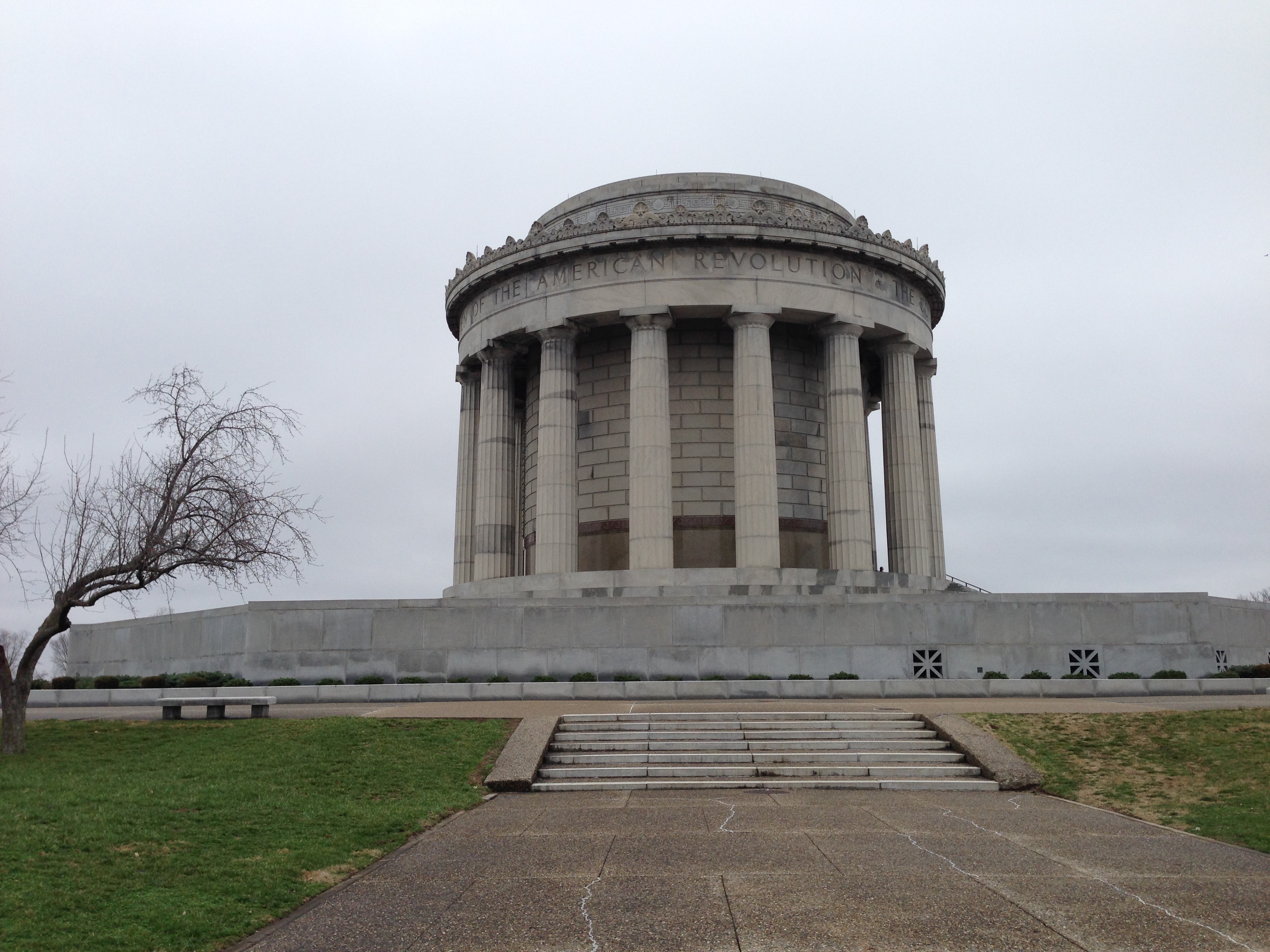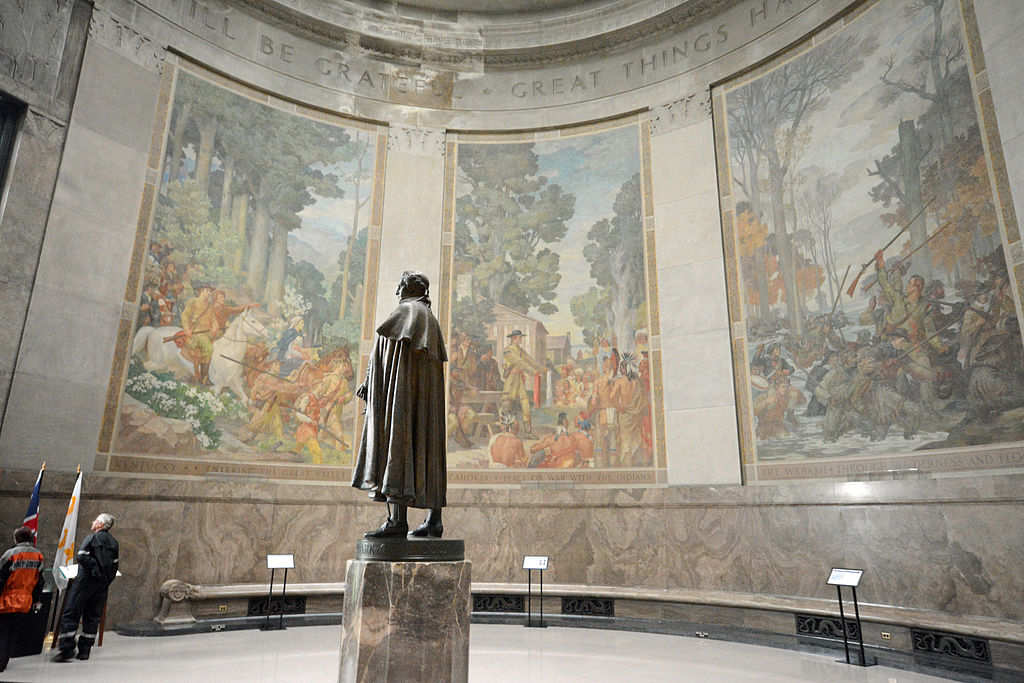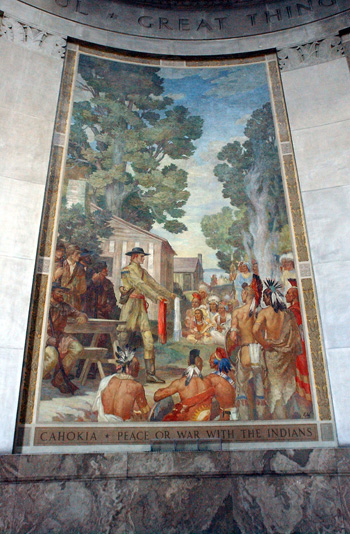My final project focuses on the western campaign (culminating with the capture of Fort Sackville) of George Rogers Clark during the American War for Independence. As photography did not yet exist in the 1770s, we must rely on artists’ representations of important people and events to give us a depiction of how it might have looked.
The images I chose is called “Cahokia: Peace or war with the indians.” It is one of seven murals created by Ezra Winter to inhabit the George Rogers Clark Memorial in Vincennes, Indiana which was completed in 1933 to celebrate the 150th university of the American Revolution. The murals themselves are giant, measuring 28 feet tall and 16 feet wide. Each mural is painted on a single piece of Belgium linen. All of the murals are interesting as historical specimens as they were created in the 1930s as part of a larger project to celebrate Clarks’ achievements. As such, they are very celebratory of Clark, showing him as commanding and heroic.


This particular mural, “Cahokia: Peace or war with the indians” is supposed to depict Clark at Cahokia (one of the towns his troops captured) during the late summer of 1778. He is said to be meeting with some of the local Indian leaders (many of whom were allies of Clark’s enemy, British Lt. Governor Henry Hamilton) in order to convince them to switch sides. In particular, he is shown here, holding out a white belt of peace and a red belt of war. While Clark is depicted as being outnumbered, he is said to have been so bold and commanding that some of the American Indians who had been allied with Hamilton were impressed, and signed a peace agreements with Clark.

I think this mural is interesting in many ways, but it might be difficult for history students to make sense of it without the proper context. For example, at one level, you can analyze the painting for historical accuracy. Was Clark actually the one at Cahokia? Did he ever have a large peace council with local American Indians? Were the American Indians so easily swayed by Clarks “commanding presence” that they immediately ended their long time alliance with the British to join Clark? One way to answer these questions is to compare the painting’s depiction with primary sources (journals and diaries) left by some of the participants or with other scholarly sources. If I was presenting this image to a class, one thing I would call attention to is the depiction of the American Indians themselves. What types or groups of Indians were living around Cahokia (near present day St. Louis)? And what types of American Indians are shown? Further research would show that local Indian groups might have included Illini, Kickapoo, Piankashaw, Miami, Wea, Potawatomi, Chickaswa, Sac and Fox. All of these groups are what historians consider Woodland Indians. The Indians depicted in this mural, with the large headdresses, are more typical of the Western Plains Indians. How might students account for this discrepancy? Was it a uneducated mistake on the part of the artist, or was it done intentionally?
This leads us to the next way to interpret this mural: as a product of its time and purpose. As mentioned earlier, the mural was commissioned for a memorial celebrating the life and accompaniments of Clark. As such, it seemingly shows Clark as in charge, with many of the American Indians sitting in submission around him, hanging on his every word. I would want students to notice how the relationship between Clark (a white man) and the American Indians is depicted. How might people in the 1770s have seen this relationship? How might people in the 1930s viewed this relationship (as indicated by the mural)? How is that different from the historical revisionist ideas that emerged in the 1990s?
When visiting mural as part of the George Rogers Clark Memorial, it is easy to accept the message the artist is providing about Clark’s heroism. And in the classroom, without context about Clark’s expedition and about the creation of the paining, students might struggle with critical analysis of this image. But, when provided with the necessary contextual material, I think that students will start to question the legitimacy or historical accuracy of the painting. I think they will start to see it for what it really is — one artist’s interpretation from a particular time and place — instead of an infallible snapshot of the past.
1 thought on “Fourth Piece of the Puzzle”